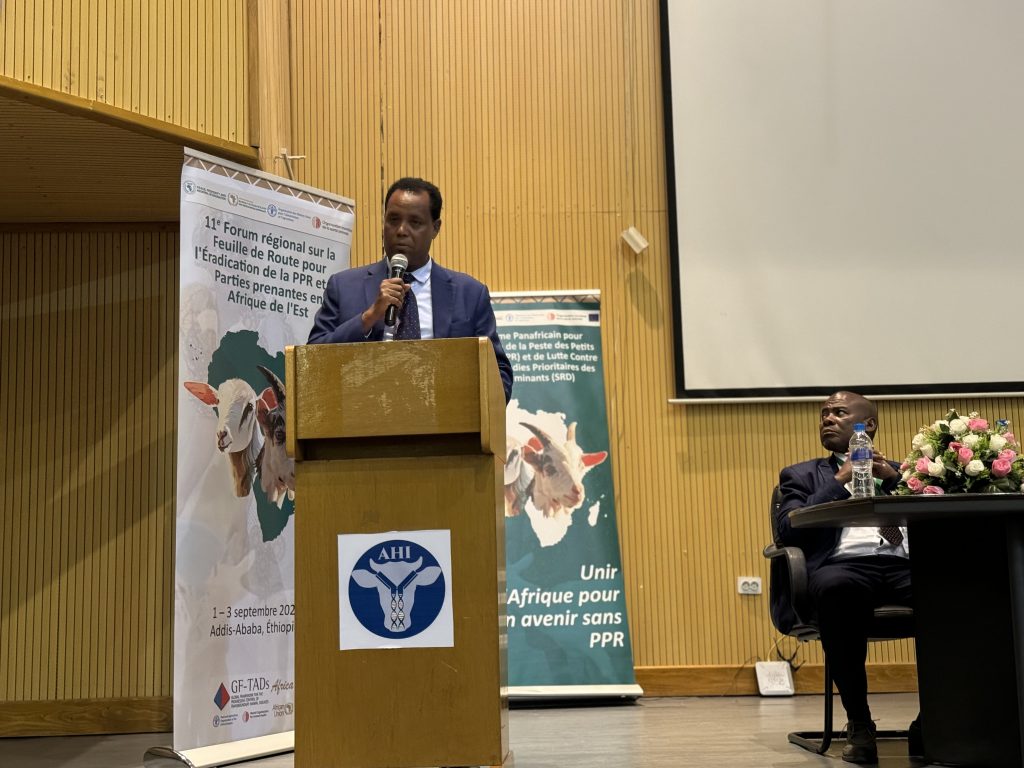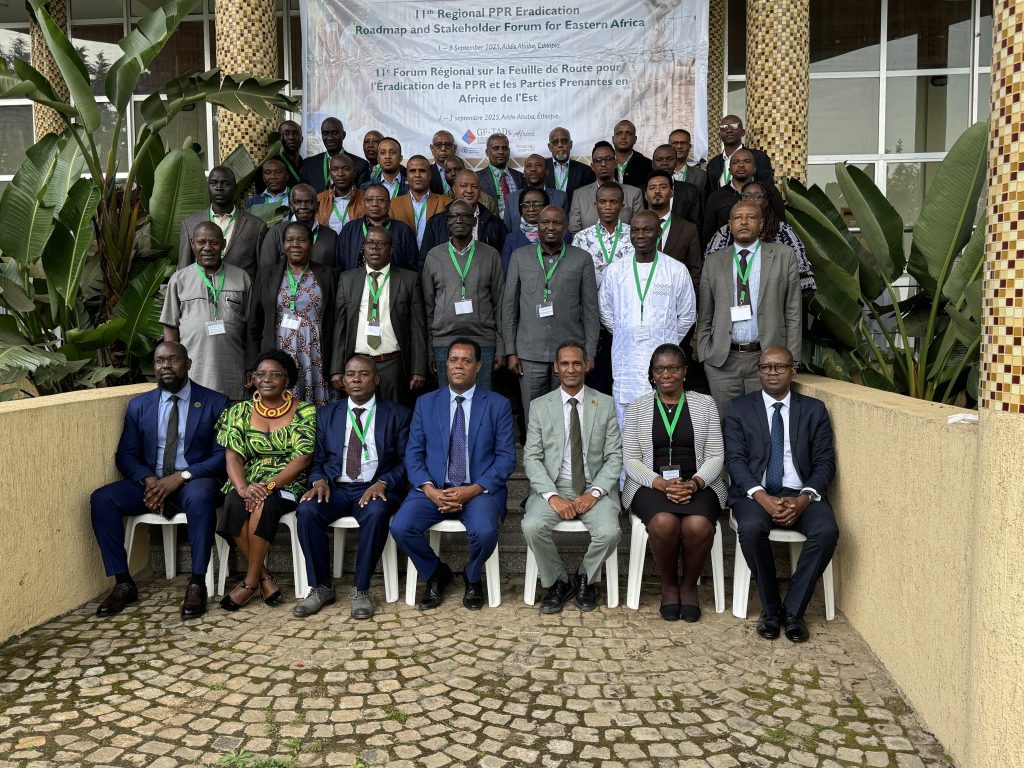In Sebeta Town, Ethiopia, the 11th Regional Peste Des Petits Ruminants Satkholders Consultative Workshop comprising IGAD and EAC countries commenced yesterday and will continue till tomorrow.
The workshop underlined that in order to successfully control and eventually eradicate transboundary livestock diseases like the peste des petits ruminants by 2030, Africa will need at least 500 million euros. Additionally, the session noted that these diseases require coordinated regional approaches.
Seventy percent of the promised funds are anticipated to come from shareholders, with the remaining portion coming from governments. In his introductory remarks, State Minister of Agriculture ,Dr.Fikru Regassa ,stated that cooperation between African nations is essential to the fight against this virus .

“This meeting is a test of our combined resolve, not just a technical planning session. There is a genuine risk of cross-border spread, and cooperation is needed to safeguard our area. By working together, setting up more vaccination facilities, and raising awareness, we can make sure that both East Africa and Africa stay PPR-free.”
“By encouraging cross-border cooperation and increasing capacity for early identification and quick action, this workshop is an essential step in carrying out the PPR Global Eradication Programme’s strategy.”He said.
Countries like Ethiopia, Djibouti, Kenya, Sudan, and Burundi discussed their national PPR eradication works and problems they are faced during the workshop.
Topics covered included surveillance and monitoring techniques, vaccine kinds, and the design of vaccination campaigns. A unified strategy would improve regional control and ultimately elimination are needed to eradicate the disease, according to the participants.
The session also made clear that in order to create and operationalise coordinated cross-border actions within a functioning Episystem, high-level political backing is necessary. The execution of cross-border activities, resource mobilisation, and collaborative planning all require commitment at the technical and decision-making levels. In order to conform to the episystem concept, participating nations pledged to update their national eradication initiatives. This entails using epidemiological and molecular data to map out episystems, focussing eradication efforts inside designated hotspots, and keeping an eye on the surrounding areas to block possible routes of transmission.

“In many African nations, goats and sheep are the most popular animals. Therefore, it will be difficult to obtain the proper revenue and food quality from this animal if we do not spread diseases like PPR that are damaging them. Therefore, one nation’s efforts to battle this illness are insufficient.”,According to Dereje Wakjera, Director of the IGAD Centre for Pastoral Areas and Livestock Development.
The event, which is part of the EU Support for the Eradication of PPR from Africa Programme (2023–2026), is organised in partnership with AU-IBAR, FAO, and the World Organisation for Animal Health (WOAH). The morbillivirus that causes Peste des Petits Ruminants (PPR), sometimes known as “goat plague,” is closely related to the one that causes the now-extinct rinderpest. PPR can cause fever, respiratory distress, oral ulcers, and severe diarrhoea in goats and sheep. In sensitive herds, the mortality rate can approach 80%. PPR has expanded throughout Africa, the Middle East, and Asia since it was originally described in 1942 in Côte d’Ivoire, endangering tens of millions of smallholder farmers.